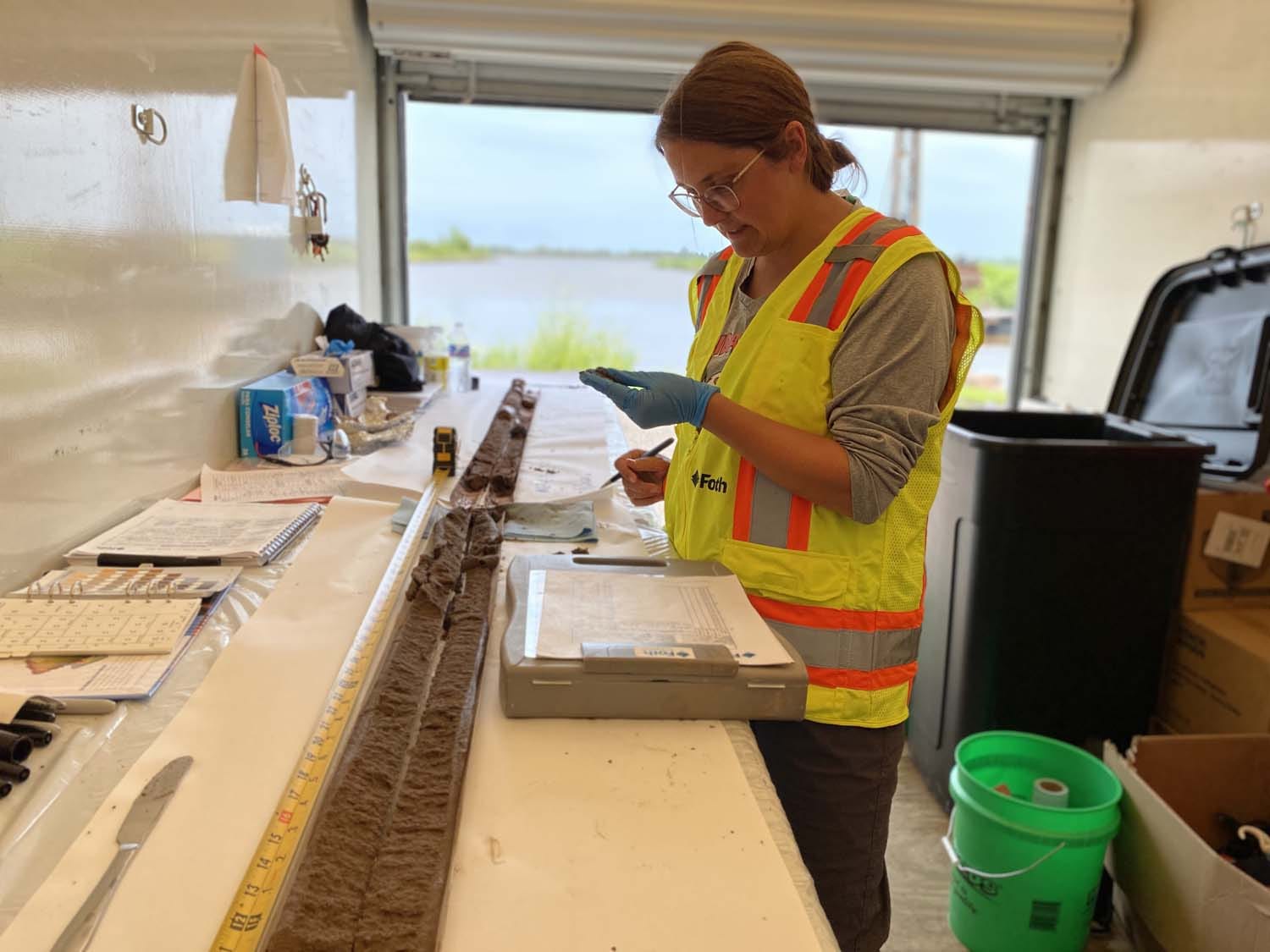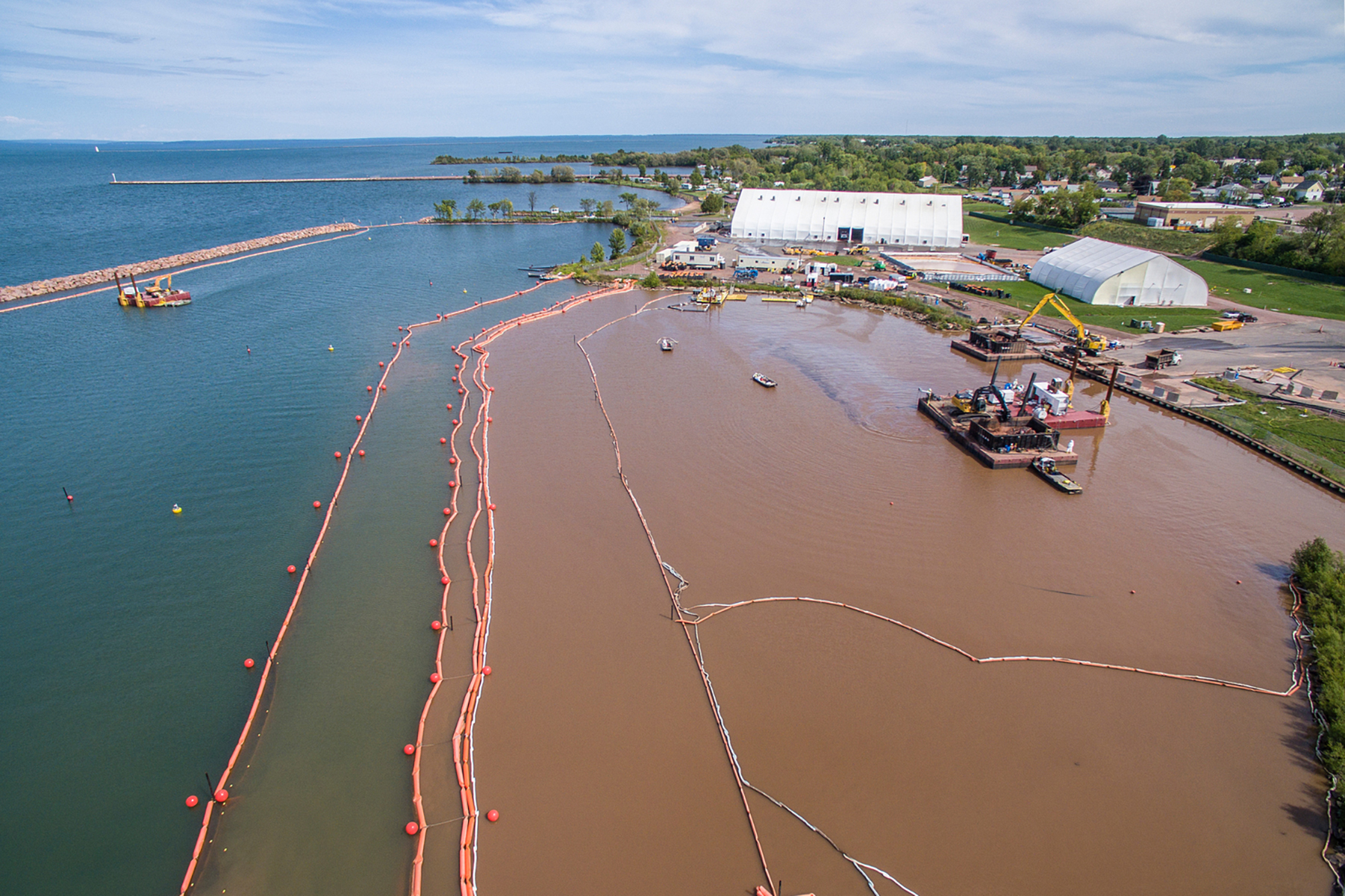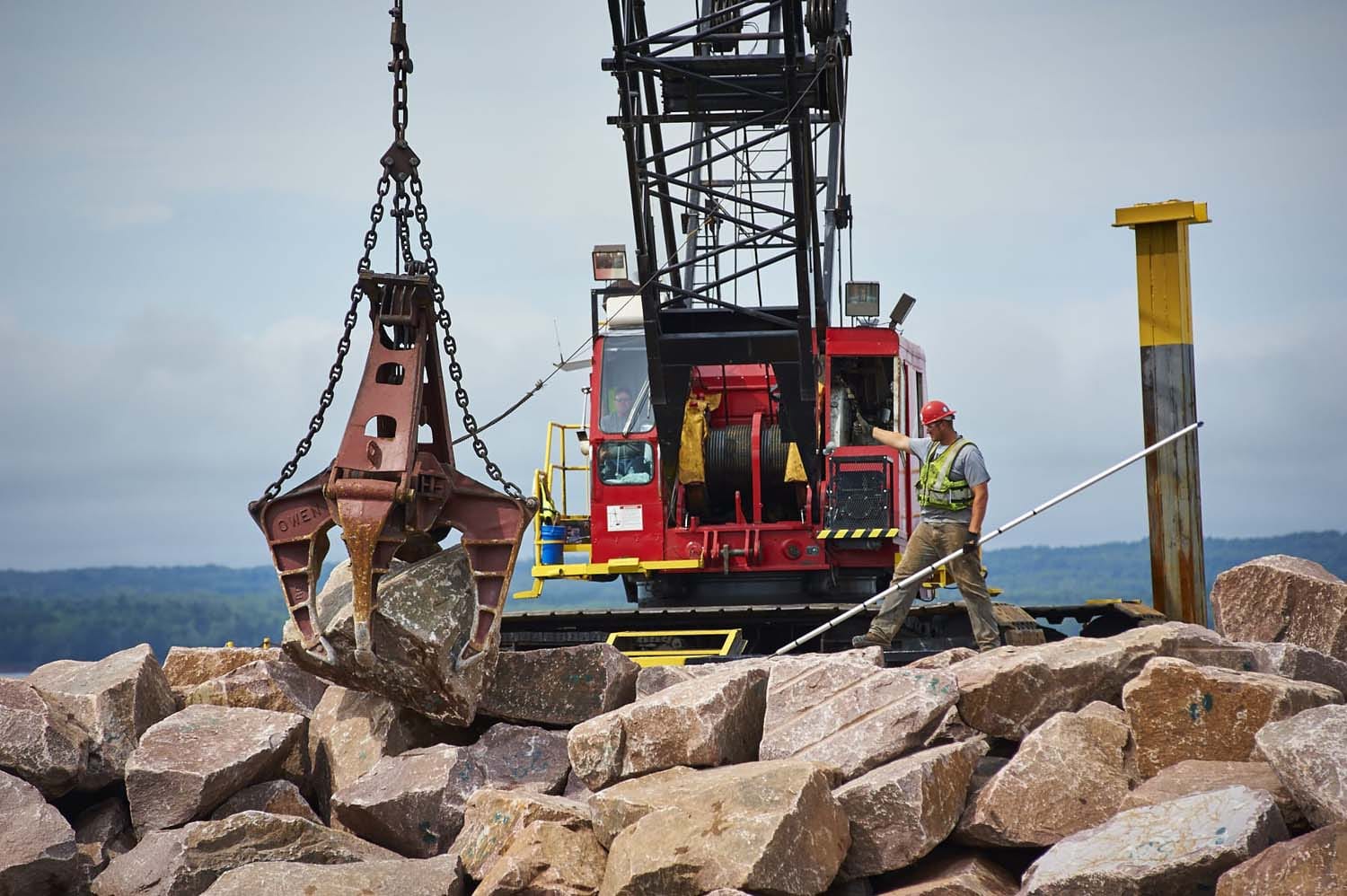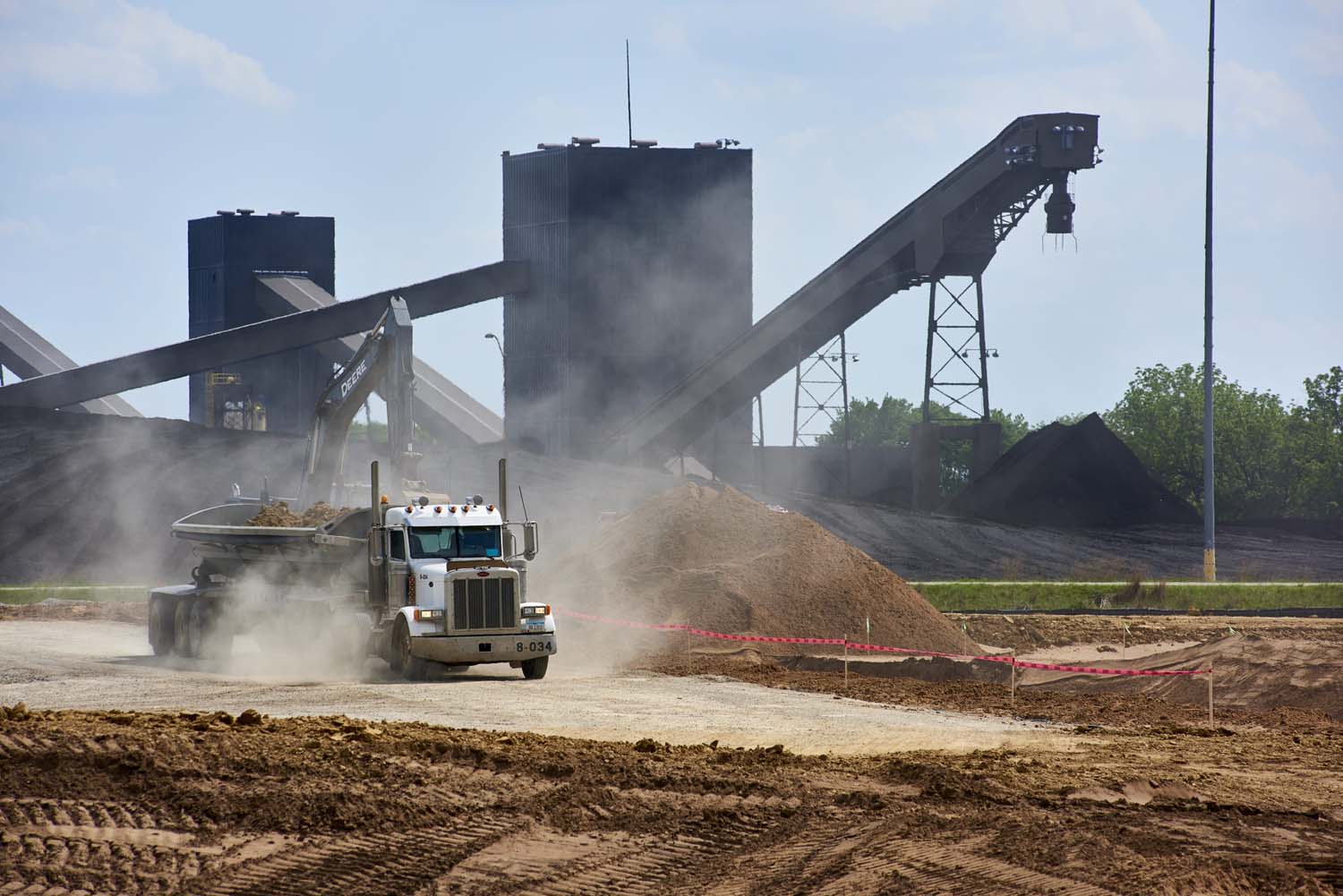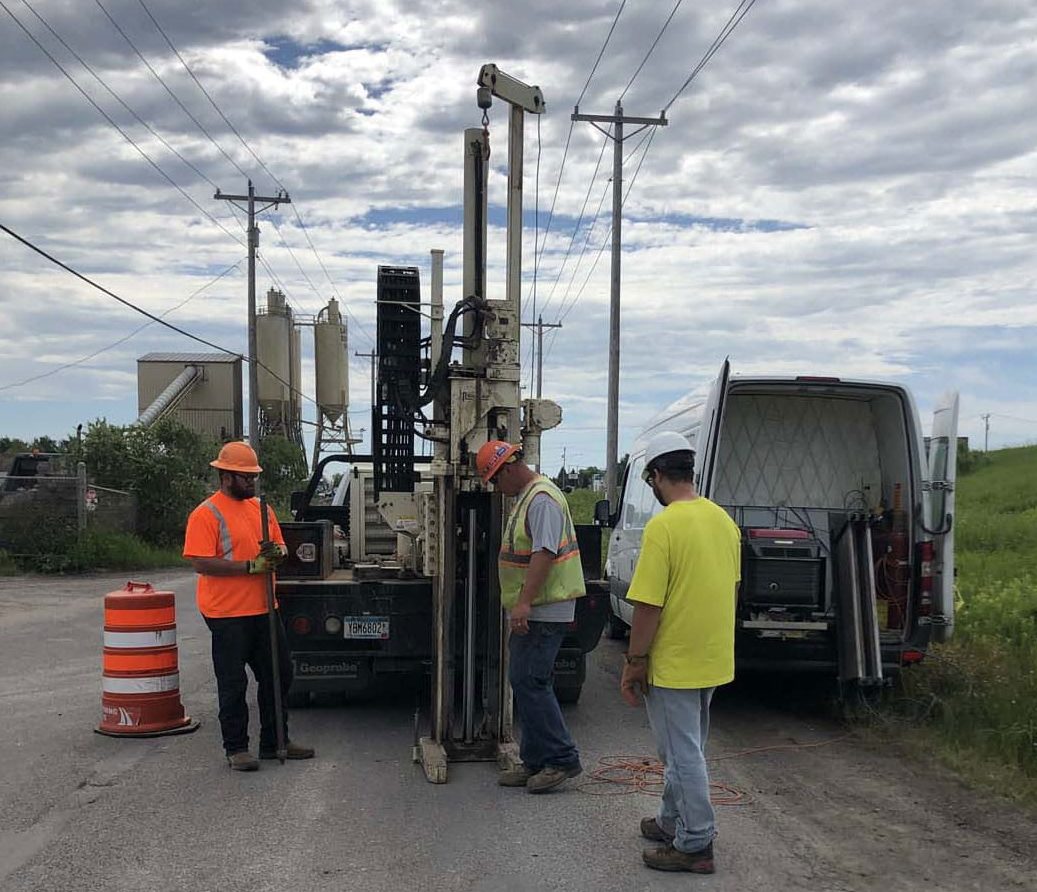
Background
Superior Water, Light and Power Co. (SWL&P) is partnering with the Wisconsin Department of Natural Resources (WDNR) and the U.S. Environmental Protection Agency (EPA) Great Lakes National Program Office (GLNPO) to remediate soils, groundwater, and sediments in the C Street Slip adjacent to a former manufactured gas plant site (Site) in Superior, Wisconsin. The plant manufactured gas along the St. Louis Bay waterfront in Superior, Wisconsin more than 100 years ago, and then continued to store and distribute gas from the Site until 1959. The Site consists of both upland and in-water areas that are impacted by legacy releases of oily/ tar-like waste and a lighter petroleum waste from the Site.
Approach
The Site is located within an industrial area that includes a major railroad line, a concrete plant, and a City of Superior Wastewater Treatment Plant (WWTP). The shoreline in the vicinity of the Site has evolved over time, primarily as a result of several phases of construction at the City’s WWTP, development of other industrial operations, and construction of railroad infrastructure. Just off the shoreline to the north is the C Street Slip that has historically been maintained through periodic dredging events to maintain adequate draft conditions for deep draft vessels serving an adjacent lime processing plant.
Foth helped finalize the site investigation report and perform a Pre-Design Investigation (PDI) necessary to fill data gaps and select the preferred remedial alternative for the upland and in-water areas. The most significant contaminants at the Site are volatile organic compounds, also called VOCs, such as benzene, toluene, ethylbenzene and xylenes (petroleum like), polynuclear aromatic hydrocarbons, or PAHs, and mercury.
Following the multi-media (i.e., soil, groundwater, and sediment) PDI, Foth developed an updated Conceptual Site Model and 3D depictions of the nature and extent of contamination across the Site. Our team then prepared separate Remedial Action Options Reports (RAORs) to provide options for a remedial strategy to address the contamination in 1) upland soil and groundwater; and 2) in-water sediments.
Results
Foth completed the upland remedial design which includes excavation of several thousand cubic yards of impacted soil that will be transported for disposal at a licensed off-site facility. A biosparge system will be used to degrade subsurface contaminants in place in areas that cannot be readily accessed by excavation methods. Construction of the upland remedy is anticipated in 2023. Foth is the Engineer of Record and will serve as the Engineering Construction Observer and owner representative during this work, responsible for collecting all environmental samples in accordance with the Field Sampling Plan. Air, groundwater, stormwater, and soil management/monitoring plans, along with traffic control and safety procedures, have been developed to ensure that public health and safety is addressed throughout the process.
Our team is in the process of incorporating new WDNR-collected sediment data into the in-water RAOR and will be updating that document with an expanded preferred remedial alternative that will not only address Site-related impacts to the sediment, but also regional mercury inputs to the Slip. Once WDNR, EPA, and SWL&P reach agreement on the preferred remedial alternative and the in-water RAOR is finalized, Foth will proceed in developing the remedial design. The RAOR and design work are bring performed under the Great Lakes Legacy Act program. The sediment remediation phase is scheduled to begin in 2024.
Markets: Utilities
Services: Remediation

